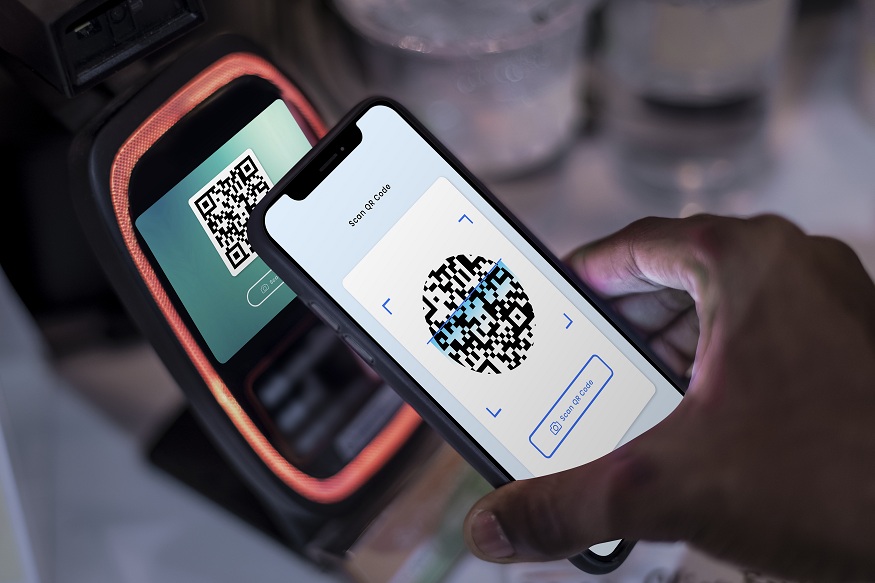How UPI Transfers Are Influencing the Speed and Confidence of Borrowing
6 min read
Contactless and cashless payment through qr code and mobile banking
UPI has been a major factor in changing the face of how India does digital transactions. Pretty much everything from buying groceries to paying an electricity bill can be done through UPI, which has become an indispensable part of our existence with its remarkable ease and convenience. However, its influence does not stop at local transactions; it has gone far into the borrowing sector, changing the way lenders and borrowers look at and interact with loans.
The Rise of UPI: A Game Changer
Back in 2016, NPCI came up with UPI as a way to make digital transactions easier throughout the country, India. A UPI transaction is definitely much easier and faster than an old-fashioned bank-to-bank transfer which requires the user to have account details and IFSC codes. Users can send money the moment they want using easy-to-understand proxies such as a mobile number or a virtual payment address (VPA). Because of this easy-to-use and time-efficient system, UPI has become one of the most popular means of digital payment in India.
UPI’s Impact on Borrowing: An Introduction
In the past, borrowing had to do with painful waiting periods and piles of papers in India. The appearance of UPI has enabled financial institutions and loan providers to accelerate their verification and disbursal stages. The loan application process has become extraordinarily fast due to the seamless technology of UPI which also guarantees the security of transactions.
The Speed of Loan Transactions
Instant Verification and Approval
Probably the most important change introduced by UPI in the field of borrowing is the instant verification of details to the bank of a loan applicant. Before, loan applications could wait for processing from days up to weeks. Borrowers were deeply into a tedious circle where they had to provide numerous documents and then wait for them to be verified. Nowadays, the waiting time has significantly shortened and is almost non-existent. Therefore, because UPI interface is directly linked to the bank account it is easy for the lender to do real-time verification of the applicant therefore the time taken for approval gets shortened severely.
Quick Disbursal of Funds
Once a loan has received an official approval, UPI enables the money to be sent to the borrower’s bank account immediately. This quickness, therefore, is very helpful for a personal or emergency loan situation where the borrower may need money immediately. To sum up, UPI is the one that has facilitated a fast transaction instead of a long and boring process, thus giving the user an experience of both speed and convenience.
Building Confidence Among Borrowers
Enhanced Security Measures
Security is perhaps the most important aspect that comes to mind if thinking about the borrowing of money. Borrowers require that their financial info is kept safe. UPI takes care of that need by deploying secure encryption methods. Two-factor authentication is required for transactions, and the use of VPAs makes sure that even the least contact details remain secure. This absolute security makes the user feel confident as to loaning technology providers, since their sensitive info won’t be at risk of hacking or leaking out.
Trust in Financial Institutions
In addition, UPI brings about trust between borrowers and FI. With transactions being transparent and easy grievance mechanisms against any issues, borrowers become more confident visiting lenders for borrowing needs. Through such transparency, the borrower gets reassured and is more inclined to use formal lending avenues rather than taking money from unlicensed or informal sources.
The Role of UPI in Microloans and Peer-to-Peer Lending
Facilitating Microloans
Microloans are targeting people who need a small amount of money, and they are mostly those people who are underbanked or unbanked. UPI has been a major factor in the development of microloans accessibility as it offers a convenient platform for transactions. Many fintechs have adopted UPI as the medium through which they loan microloans with little or no paperwork, thus getting easy access to a large pool of customers who are in dire need of money for personal or business purposes.
Boosting Peer-to-Peer Lending
The rise of P2P lending is mainly attributed to UPI, which provides a very important lead to this growth. UPI being a fast and safe solution is the main reason why P2P sides are attractive to individuals who want to lend and to those who want to borrow. In this case, a borrower can get funds from an individual lender and not from a financial institution and vice versa in a very short period of time thus opening the ways to investing in personal loans.
UPI and the Broader Financial Ecosystem
Driving Financial Inclusion
One cannot ignore the contribution of the UPI system to the cause of financial inclusiveness in India. More than 300 million UPI users are counted in India alone and countless people have got access to formal financial services that were only for the privileged. As a matter of fact, these people and many others can now participate in the borrowing ecosystem and thus be able to take loans for business, education, or personal use.
Leveraging Data for Better Decision Making
With UPI being the platform on which the users carry out their digital transactions, it makes a lot of data available to the financial institutions for lending decisions. Lenders can analyze the behavior of borrowers through the analysis of their transaction histories, lifestyle preferences, and using the resulting data to predict their potential for paying off loans, thus credit assessments become more accurate. This shift to a data-centric approach is in line with credit scoring models’ precision, which in turn, means that loan conditions will be more fair as they will be based on one’s financial behavior.
The Future of UPI and Borrowing
UPI’s influence in the borrowing scene is going to be bigger as the platform keeps on changing. Recent figures are very impressive in showing how fast UPI has grown, with over 6.57 billion transactions in August 2023 alone. This is a trend that is unlikely to stop very soon as more and more people are turning to digital payments.
Innovative Loan Products
With the help of UPI smooth link, we are bound to see novel loan products that are finely tuned to match specific requirements. Banks and fintechs may work together to develop lending solutions which are personalized, thus allowing a borrower to have the freedom to choose the repayment period and the interest rate depending on the UPI transaction data.
Cross-Border Transactions
Despite the fact that UPI is mainly serving India, there is a chance of worldwide growth in the future. One of the steps towards this goal might be allowing foreign payment systems to link up with UPI and thus making it possible for loan transactions to be done across different countries without any hitches.
Conclusion
The effect of UPI on borrowing in India has been very deep and quite transformative. By making the process faster and more secure, UPI has been able to enliven the loan environment with the energy of speed and the confidence of trust. The experience, therefore, of the borrower is made smoother and faster while the lender’s data becomes more reliable and risk is reduced.
UPI is continually changing the way digital payments are done, and as a result, its effect on borrowing will become even more powerful in the future. The people who are involved in the lending business namely lenders, borrowers, and policymakers should still be as flexible and forward-looking as they are now, so that this strong platform will continue to be a source of power to the individual and a driver of financial innovation across the country.
The combination of speed, security, and trust has led to the dawn of a new era in borrowing in India. By taking full advantage of UPI’s features, the financial sector in India is no longer out of reach and it is now full of potential for the future. Whichever way it be microloans, peer-to-peer lending, or traditional financial institutions; UPI is, at the core, doing a fundamental job of changing how we deal with credit, one transaction at a time.






